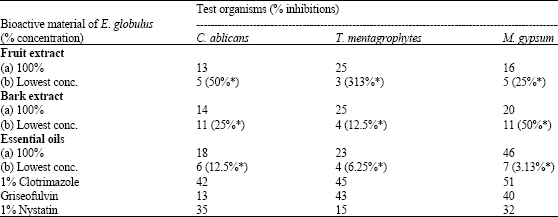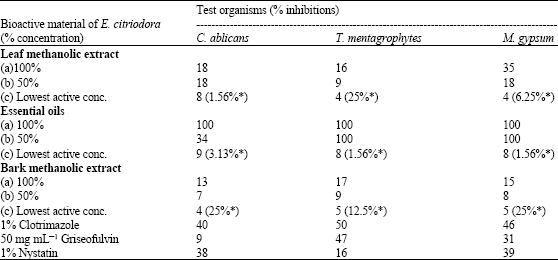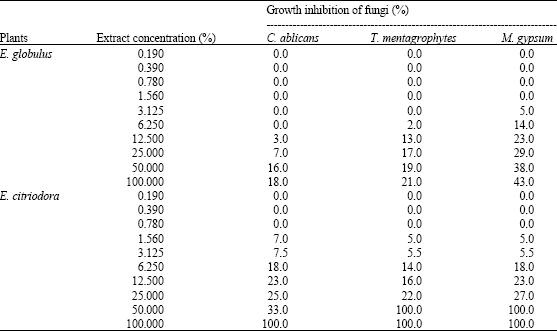Research Article
Comparative Assessment of Antifungal Activity of Extracts from Eucalyptus globulus and Eucalyptus citriodora
Department of Botany and Horticulture, University, P.O. Box 333, Maseno, Kenya
J.A. Ogur
Department of Chemistry, Maseno University, P.O. Box 333, Maseno, Kenya













